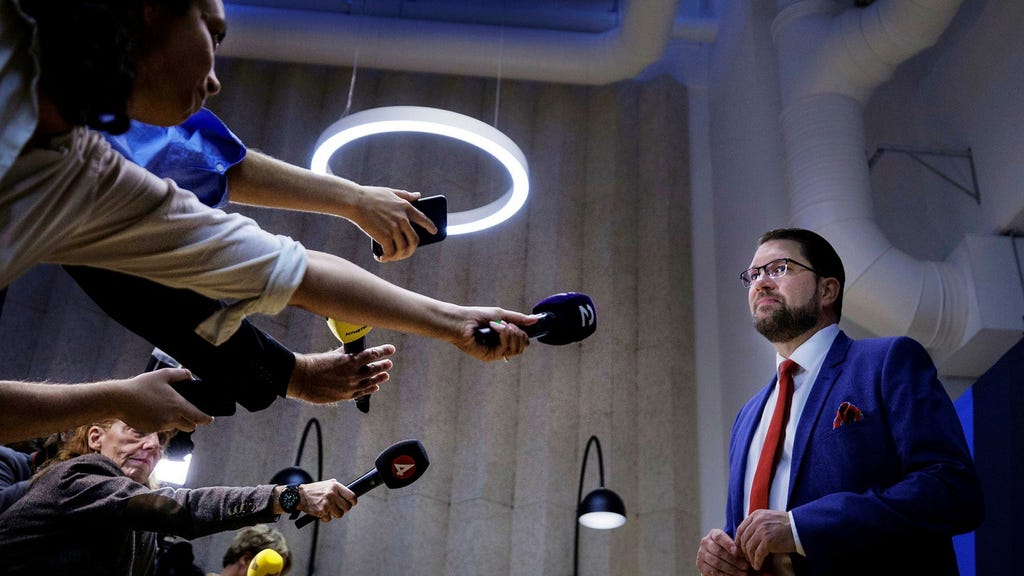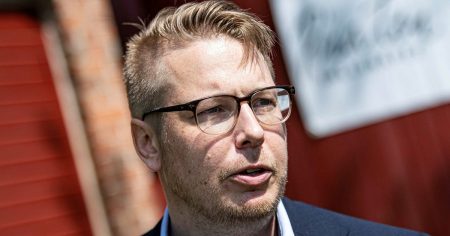The Erosion of Media Trust: A Transatlantic Phenomenon
The entry of Donald Trump into the political arena in 2015 marked a precipitous decline in American trust in news media. Gallup polls reveal a sharp drop, exacerbating a decades-long downward trend. While trust briefly rebounded, it plummeted again in late 2023, reaching levels comparable to the 2016 nadir. This erosion is not accidental, but rather a consequence of the deliberate rhetoric employed by political leaders and influential figures. Brendan Nyhan, a political science professor at Dartmouth College, emphasizes the significant impact of elite rhetoric in shaping public perception, arguing that the loosening of inhibitions among politicians and opinion leaders has been underestimated. Trump’s consistent attacks on the media, his encouragement of public animosity towards journalists, and his threats to strengthen libel laws have undoubtedly contributed to this decline. Furthermore, his recent resurgence and pronouncements of retribution against perceived enemies, including journalists and news organizations, further fuels the fire of distrust.
This phenomenon transcends national borders. Research consistently demonstrates the crucial role political leaders play in shaping public trust in media. Fredrik Stiernstedt, a professor of media and communication studies at Södertörn University, highlights the parallel decline in media trust in Sweden, coinciding with the rise of the Sweden Democrats, a right-wing populist party, in 2014. Their consistent criticism of the media has resonated particularly with right-leaning voters, who exhibit significantly lower levels of media trust than supporters of other parties. This pattern mirrors the situation in the United States, where only a small fraction of Republican voters express trust in mainstream media. This erosion of trust is not solely attributable to rhetoric; it is intertwined with broader systemic trust. High public trust in societal institutions and political figures generally correlates with high media trust. While Sweden maintains relatively high trust levels compared to nations like France and Greece, it still lags behind Scandinavian neighbors like Finland and Norway.
The influence of elite rhetoric on public attitude shifts is a key element in understanding this dynamic. As American political scientist Larry Bartels argues in his book "Democracy Erodes From the Top," changes in societal attitudes are primarily driven by elites and leaders, not the other way around. The increasingly polarized political landscape and the evolving media environment of the past decade have intensified scrutiny of disinformation, media perception, and the health of democracy itself. This area has become a rapidly expanding field of research, with scholars like Brendan Nyhan studying exposure to conspiracy theories and the factors that influence susceptibility to misinformation. Nyhan’s research indicates that the group completely immersed in fabricated information is small; during the 2016 and 2020 elections, most voters across the political spectrum received information from multiple sources. However, the sources they choose to believe reveal deeper divisions.
The reasons behind belief in misinformation or adherence to false narratives are complex and multifaceted. Resistance to knowledge is a focus of ongoing research, including a multi-year project at Stockholm University led by philosopher Åsa Wikforss. This research suggests that reluctance to accept facts or change one’s mind even when presented with contradictory evidence stems from the value attached to specific beliefs. These beliefs often serve a social purpose, such as belonging to a particular group or community. Such beliefs often carry political significance. For instance, if the belief that vaccines are dangerous becomes entrenched within a group, members will defend that belief despite scientific evidence to the contrary. This can lead to a deliberate search for reasons to dismiss expert opinions, especially when politicians amplify the narrative that scientists or experts have their own political agendas. This politicization of factual matters further complicates the issue.
The emotional investment in shared beliefs can foster a sense of camaraderie within groups who feel they possess unique insights that the rest of society, including the media, ignores. This can manifest as a belief that news media is colluding with the political establishment. Fredrik Stiernstedt argues that growing media distrust offers several advantages for politicians, making it easier to gain public support for reducing funding for public broadcasting or promoting alternative media channels aligned with their own perspectives. While understanding the mechanisms behind conspiracy theories and knowledge resistance is crucial, both American and Swedish researchers caution against relying solely on media literacy interventions. These interventions can be counterproductive if they promote indiscriminate skepticism towards all sources, leading to a relativistic view of truth. While social media platforms’ efforts to flag questionable content may have marginal benefits, the most effective antidote to media distrust lies in the language used by political leaders themselves.
Ultimately, if the political elite refrained from spreading anti-media populist messages, the erosion of media trust could be significantly mitigated. However, as Stiernstedt notes, this is unlikely to occur due to the inherent political motivations driving media distrust. The instrumentalization of media distrust for political gain has become a fixture of the contemporary political landscape. This suggests that societies may have to learn to navigate this challenging environment and develop strategies to foster more nuanced and critical engagement with information. The challenge lies in finding a balance between healthy skepticism and a wholesale rejection of credible sources of information, which is essential for a well-informed and functioning democracy.














